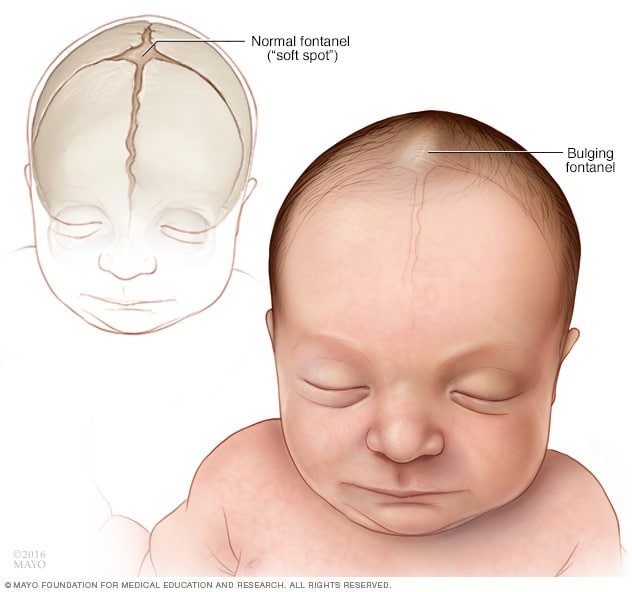A nurse is caring for a toddler who has acute laryngotracheobronchitis and has been placed in a cool mist tent. Which of the following findings indicates that the treatment has been effective?
Barking cough
Decreased stridor
Improved hydration
Decreased temperature
The Correct Answer is B
Choice A: A barking cough is not a finding that indicates that the treatment has been effective, but rather a symptom of acute laryngotracheobronchitis, which is also known as croup. Croup is a condition that causes inflammation and narrowing of the upper airway and produces a characteristic barking or seal-like cough. A barking cough may persist for several days after the onset of croup and does not reflect the severity of the airway obstruction.
Choice B: Decreased stridor is a finding that indicates that the treatment has been effective, as stridor is a sign of airway obstruction caused by acute laryngotracheobronchitis. Stridor is a high-pitched, noisy breathing sound that occurs when the air passes through the narrowed airway. Stridor may be inspiratory, expiratory, or biphasic,
depending on the level of obstruction. Decreased stridor means that the airway is less obstructed and the child can breathe more easily.
Choice C: Improved hydration is not a finding that indicates that the treatment has been effective, but rather a goal of treatment for acute laryngotracheobronchitis. Dehydration can worsen the symptoms and complications of croup by thickening the mucus and increasing the risk of infection. Improved hydration can help thin out the mucus and prevent dehydration. Hydration can be improved by encouraging oral fluids, administering intravenous fluids, or providing humidified air.
Choice D: Decreased temperature is not a finding that indicates that the treatment has been effective, but rather a possible outcome of treatment for acute laryngotracheobronchitis. Fever may or may not be present in croup, depending on the cause and severity of the condition. Fever can be caused by viral or bacterial infection, inflammation, or dehydration. Decreased temperature can indicate that the infection or inflammation is resolving or that the dehydration is corrected.
Nursing Test Bank
Naxlex Comprehensive Predictor Exams
Related Questions
Correct Answer is C
Explanation
Choice A: Oliguria is a condition of reduced urine output, which can indicate dehydration, kidney failure, or urinary tract obstruction. It is not associated with a CNS infection, which affects the brain and spinal cord.
Choice B: A negative Brudzinski sign is a normal finding that indicates no meningeal irritation. It is elicited by flexing the neck of a supine patient and observing no involuntary flexion of the hips and knees. A positive Brudzinski sign, on the other hand, is a sign of meningitis, which is a type of CNS infection.
Choice C: A bulging fontanel is an abnormal finding that indicates increased intracranial pressure, which can be caused by a CNS infection, such as meningitis or encephalitis. A fontanel is a soft spot on the skull of an infant that allows for brain growth and development.
Choice D: Jaundice is a condition of yellowing of the skin and eyes, which can indicate liver disease, hemolytic anemia, or neonatal hyperbilirubinemia. It is not associated with a CNS infection, which affects the brain and spinal cord.

Correct Answer is D
Explanation
Choice A: Urinary incontinence is a condition of involuntary loss of urine control, which can be caused by various factors, such as nerve damage, bladder dysfunction, or medication side effects. It is not always caused by neuroblastoma, which is a type of cancer that arises from immature nerve cells.
Choice B: Blood-fed is not a term that describes a neuroblastoma. Neuroblastoma is a type of cancer that arises from immature nerve cells, which can form tumors in various parts of the body, such as the adrenal glands, abdomen, chest, or spine.
Choice C: Tiny is not a term that describes a neuroblastoma. Neuroblastoma can vary in size and shape depending on the location and stage of the tumor. Some neuroblastomas can be very large and cause compression of nearby organs or structures.
Choice D: Unfortunately, much of the time, by the time a diagnosis has been made, metastasis has already occurred. This statement describes a neuroblastoma accurately. Neuroblastoma is a type of cancer that arises from immature nerve cells, which can spread rapidly to other parts of the body, such as the bones, liver, lymph nodes, or skin.
Metastasis is the process of cancer cells breaking away from the original tumor and forming new tumors elsewhere. Neuroblastoma often has no specific symptoms until it has metastasized, making it difficult to diagnose early and treat effectively.
Whether you are a student looking to ace your exams or a practicing nurse seeking to enhance your expertise , our nursing education contents will empower you with the confidence and competence to make a difference in the lives of patients and become a respected leader in the healthcare field.
Visit Naxlex, invest in your future and unlock endless possibilities with our unparalleled nursing education contents today
Report Wrong Answer on the Current Question
Do you disagree with the answer? If yes, what is your expected answer? Explain.
Kindly be descriptive with the issue you are facing.
